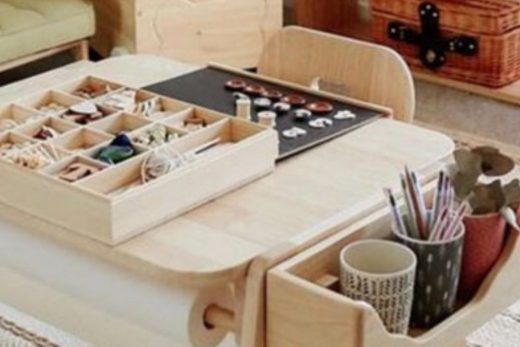Few professional painters will be found without a set of work lights. By shining white light on the wall you are painting, you get a true and clear visual representation of how well the paint is going on. Ceiling lights can not do the job. Find two inexpensive LED work lights, each rated at 4,000 lumens, at your local home center.
Apply the Painter’s Tape
Run long, uninterrupted strips of painter’s tape along the juncture between the wall and ceiling, wall, and adjacent walls, and along the top of the baseboards. If the wall has a door or window, run the tape around the door or window trim to protect them from spattering paint.
Apply the Primer
You do not always have to use a primer when painting a wall. This is particularly true when you are re-painting a wall the same color, and the existing paint quality is good.
Always use a drywall primer when the surface is bare drywall paper. Professional painters often request the paint store to pre-tint the primer to bring it closer to the intended wall color than stark white. This reduces the number of color coats needed.
Mix the Paint
Unless the paint was mixed at the store a couple of hours before you start painting, it will need to be mixed again. Either use a wooden paint stirring stick or chuck a metal spiral power mixer attachment into your electric drill.
Paint the Edges
Paint a 4-inch wide swath along the edges with a 2-inch trim brush by dipping the brush lightly into the paint can, wiping off the excess, then painting alongside and slightly on the painter’s tape.
Or, if using the cutting-in technique, paint the edges about 4 inches inward, as well. With either method, paint at least two coats.
Roll the Paint
Now you will roll paint on the inner part of the wall. Dip the roller in the tray and thoroughly squeeze it out by rolling it on the tray. Place the roller on the wall and paint in “W” shapes in order to fill small sections of about 4 feet high by 4 feet wide.
Finish a section before moving onto an adjacent section. Quickly work so that you maintain a wet edge. Make sure that you are always working off of a wet edge.
Let the Paint Dry and Paint a Second Coat
After the wall is finished, wait at least a couple of hours for it to dry. The glossier the paint, the longer the dry time. Flat paint can be ready for re-painting in as little as an hour in dry, warm conditions. Paint a second time.
Clean the Work Area
Clean up your brush with warm water and a paint comb, provided you are using acrylic-latex interior paint. Remove drop cloths and let them air-dry over a fence outside. Wad up plastic sheeting and throw away. Wait until the next day to remove the painter’s tape. Pull the tape straight back to cut the paint and create a sharp line.





